But Thap, courtesy name Ninh Phuc Tu, is one of the most beautiful pagodas in the Red River Delta region, with some national treasures that have been kept almost intact.
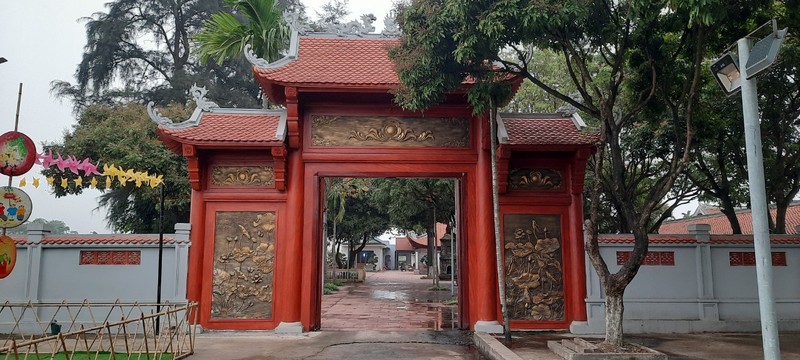
But Thap is one of the most famous and beautiful pagodas in Vietnam
It is rainy today and the mossy concrete road to Bac Ninh province’s But Thap pagoda (The Pagoda of Pen Tower) seems to be kind of slippery. I have to skillfully keep myself balance on my motorbike, which is snaking up and down through the road running in the middle of the rice field.
The pagoda, located west of But Thap village of Thuan Thanh district’s Dinh To commune, is one of the most famous and beautiful pagodas in Vietnam. Recognised as a national-level cultural historical site, the pagoda is also a famous tourism spot.

Seen from afar, the pagoda looks like a giant lotus open in the immense rice field. It was constructed in the 14th century on a land area of around 10,000 square metres. It embraces unique architecture and harmony with the surrounding environment.
I am quite surprised at seeing the pagoda “of the original past”, because while a movement of renewing and re-constructing religious works is sweeping over the country, the pagoda is in its original state, though it has under gone several times of restoration. The pagoda is quite and is visited by no one but us, due to the rain. Everything here is covered by moss, emitting a taste of the past and evoking a quite sacred atmosphere.
Aside from its historical and architectural values, But Thap also boasts four groups of national treasures, including thousand-handed and thousand-eyed Kwan Yin Bodhisattva statue that was recognised in 2012; the statues of the Buddhas of the three times – Amitabha - the Buddha of the past, Shakyamuni - the Buddha of the present, and Maitreya - the Buddha of the future; the five-story lotus tower, and the altar earned the recognition in 2020.
All the objects were made from wood in the 17th century.
“This pagoda is one of very few pagodas in Vietnam free from the invasion of the modern world and modern technology,” says an old monk whose hands are putting some joss-sticks on an ancient wooden altar at the pagoda’s front house. “The altar is carved in a sophisticate way. It was made more than 300 years ago,” the monk says.

After passing through the pagoda’s three-entrance gate, then a bell tower with eight roofs, I feel as if I just stepped over the gate of time to admire the beauty of the works here. All the space is overwhelmed by ancientness, with two giant banyan trees looking as if two colossal guardians, and the sweet ordour of lotus, which is grown in a small reservoir inside the pagoda.
Unlike many other pagodas and temples, all valuable objects and statutes here remained in their original state, free from renewal and repair. They are all considered to be Vietnamese 17th century masterpieces.
The pagoda was built under the dynasty of King Tran Thanh Tong (1258-1278) and rebuilt in 1647 in the Le Dynasty by Chinese Zen Buddhist monk called Chiet Tuyet in Vietnamese.
Legend has it that while walking along the Duong river, which is near the pagoda’s location, the monk saw a herd of flying swallows suddenly swooping down and perching on the ground on the shabby pagoda. Then he decided to rebuild it and named it Ninh Phuc Tu, which means “Pagoda of Peace and Bless”.
The pagoda’s history is also connected with Lord Trinh Trang’s (1577 – 1657) daughter named Trinh Thi Ngoc Truc. After her husband’s death, Truc was forced by her father to marry King Le Than Tong (1619-1643).
Unsatisfied with her life, Truc made herself a Buddhist devotee who raised fund to restore the pagoda.
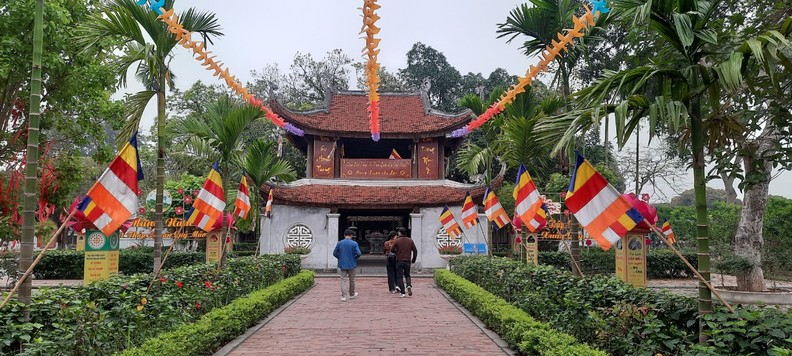
Construction of the pagoda strictly abides by Chinese feng shui principle, with its front facing southwards to receive fresh air and wind, also bless and peace. Under Buddhism’s philosophy, people’s life is “a sea of hardships”, thus south is the direction of intelligence believed by Buddhists to be a tool help people out of “the sea of hardships”.
The pagoda includes more than 100 compartments, making it one of the largest pagodas in northern Vietnam.
Inside the temple are more than 50 statues of different sizes including the Triad Buddha, Bodhisatva Manjusri (Van Thu) riding a blue lion and Samantabhadra Bodhisatva (Pho Hien) riding a white elephant.
One of the most notable statues here is that of thousand-handed and thousand-eyed Kwan Yin Bodhisattva made in 1656 with 14 layers of 789 small arms, with an eye in each palm to form a 2.1 metre halo. Another 42 arms encircle the waist, making various gestures of the hands. Under the Buddhism’s philosophy, the arms incarnate the Buddhist’ mercy to save people’s life, while the eyes can see through their life to take care of them. The goddess, who incarnates the good, is sitting on a lotus lifted up by the head of a black dragon, which symbolises the bad.

Given by the court to the pagoda, the eleven headed statue, which is 3.7 metres high, is considered one of the most valuable statutes of this type and a sculptural masterpiece in Vietnam.
The Kwan Yin Bodhisattva’s two hands joining upwards in front of her chest show people’s will towards doing the good. Her 42 arms encircling the waist mean that in order to win the bad, it is needed to use intelligence, which is manifested by the right-hand arms, and martial art, which is shown by the left-hand arms. Her two hands embracing a moon in front of her belly incarnate the self-examination to become a good person. Her two arms on her thighs embody people’s steadfast will, which is considered the source of all success.
The pagoda bears such a name because it is home to a 13 metre high tower erected in 1547 with five storeys made of white stone separated by bent-up-edged roofs. Located at the back of the main shrine, the tower which looks like a gigantic pen rises high up in the sky. It is dedicated to Chiet Tuyet, whose statute sits inside the base storey.
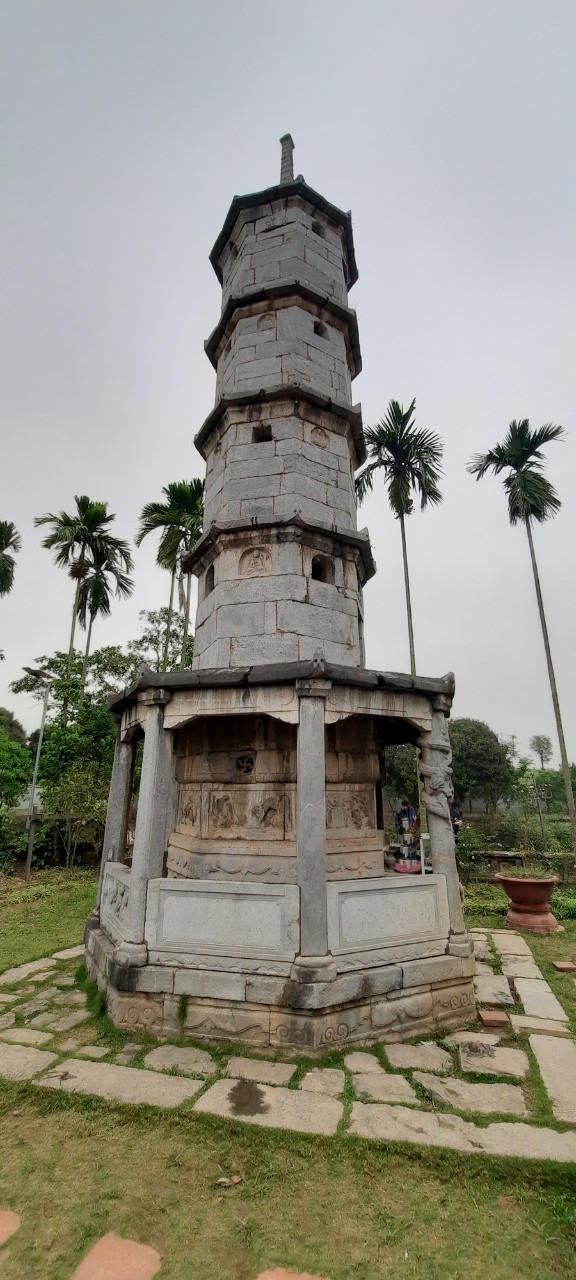
The name “But Thap” was given by King Tu Duc in 1876 during his trip to the northern region of the country. At the pagoda, upon seeing the beautiful stone tower called “Bao Nghiem”, meaning paying a debt of gratitude to the master for his strict teaching, the king renamed the pagoda But Thap.
The pagoda houses many Chinese architectural traits featured on the stone banisters surrounding the main shrine and the towers, and especially on the curved stone bridge, under which there is a small waterway planted with lotus.
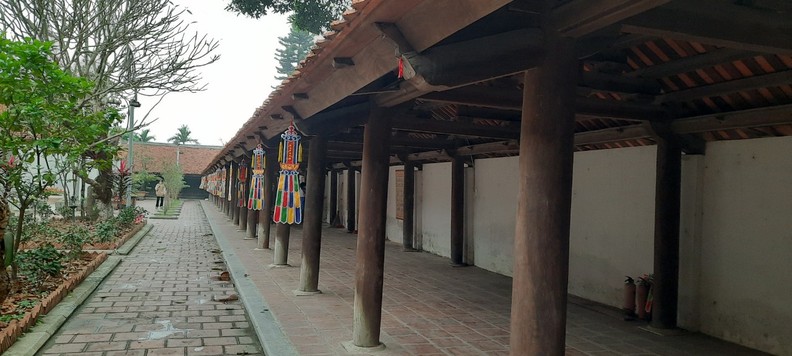
But Thap Pagoda also boasts nearly 100 wooden statues in various postures and with vivid facial expressions, along with more than 50 stone relief sculptures depicting animals, flowers, and plants.
In particular, the pagoda is also home to so many sophisticate wooden and stone carving boards everywhere in the pagoda. All the carvings describe the beauty of the nature with images of plants such as lotus, daisy, orchid, pine, and of animals such as horse, goat, buffalo, monkey, fish and stork, as well as sacred animals including dragon, unicorn tortoise and phoenix.
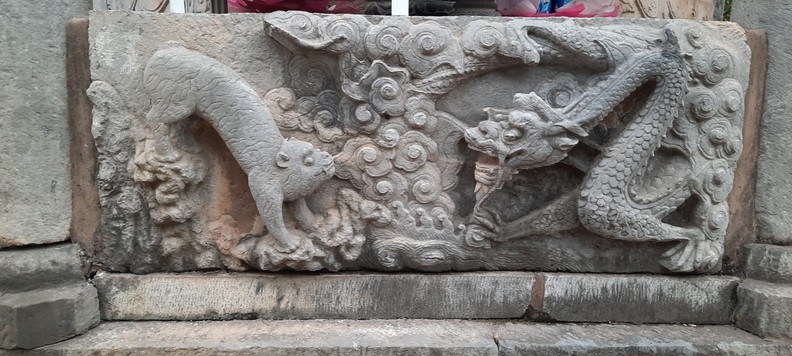
With its special values, the pagoda was listed as a national relic site by the Ministry of Culture and Information in 1962 and a special national relic site by the prime minister in 2013.
The But Thap Pagoda festival takes place on the 23rd and 24th of the third lunar month every year with many traditional cultural activities, which also add to the specialness of this Buddhist relic site.
Cong Thanh